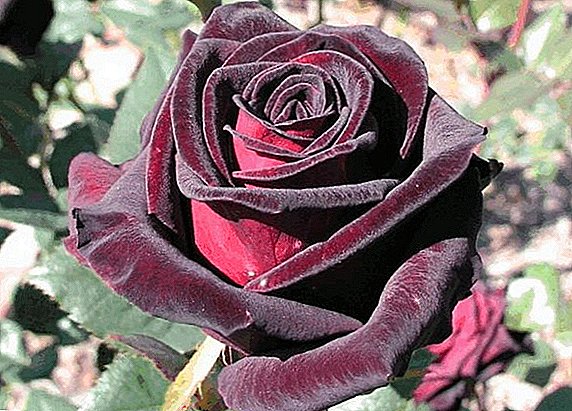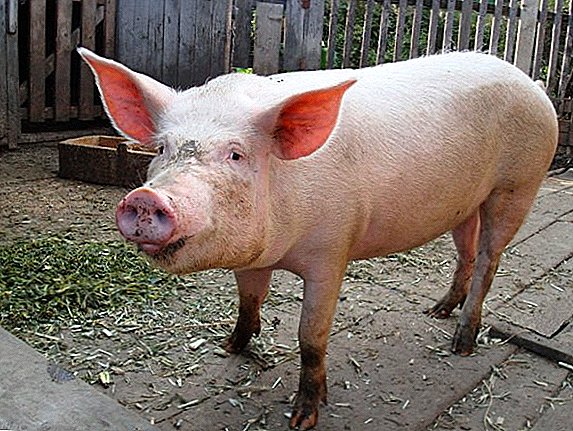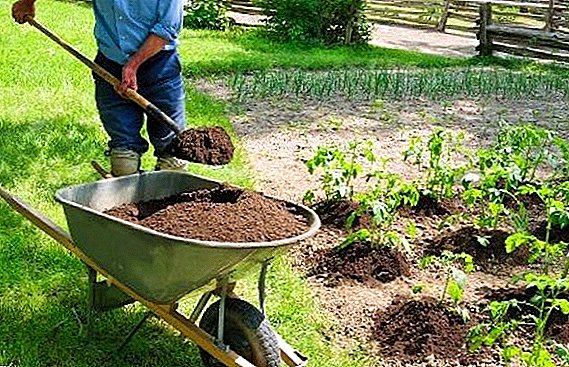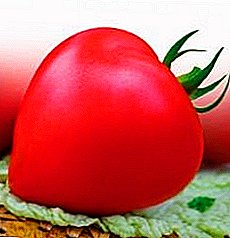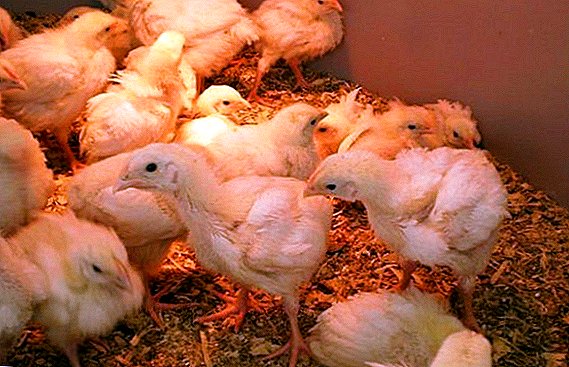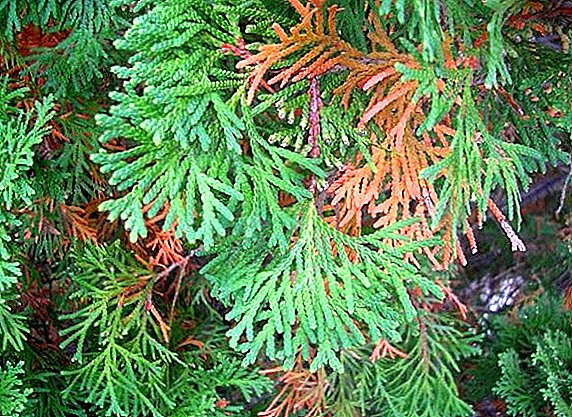 Thuja is popular in landscape design because of its beautiful evergreen needles. Therefore, any disease immediately hits its ornamentation, sometimes causing irreparable harm. Let's try to figure out what factors affect the yellowing of the thuja and what to do to avoid this trouble.
Thuja is popular in landscape design because of its beautiful evergreen needles. Therefore, any disease immediately hits its ornamentation, sometimes causing irreparable harm. Let's try to figure out what factors affect the yellowing of the thuja and what to do to avoid this trouble.
Thuja is characterized by unpretentiousness and resistance to diseases, as well as to attacks of pests. However, as with any other tree, this stability is not absolute - the plant may occasionally turn yellow, drop needles and branches may dry out. To find out how to help tue in such a situation, you first need to establish the cause of these phenomena. There may be several:
 Natural. Often the needles live from three to six years, and after this period they first brighten, then turn yellow and eventually die. This process is accompanied by yellow staining of individual branches in the middle of the crown around the trunk. Subsequently, such parts of the tree just fall. This phenomenon is called vetkopad and is observed most often in the autumn.
Natural. Often the needles live from three to six years, and after this period they first brighten, then turn yellow and eventually die. This process is accompanied by yellow staining of individual branches in the middle of the crown around the trunk. Subsequently, such parts of the tree just fall. This phenomenon is called vetkopad and is observed most often in the autumn.
Seasonal. In winter, some types of conifers can be painted in golden-bronze, brown, brown color. Thus, the tree responds to cooling and adapts to frost. With the arrival of spring, the needles should return to their usual color. However, if after winter the thuja turned yellow and did not turn green again, it’s time to think about what to do, because in this case you are dealing with some serious problem that needs to be solved and as soon as possible.
Did you know? Seasonal discoloration is characteristic of western and folded thuja. Slightly brown varieties of European thuja "Brabant", "Kolumna" and "Holmstrup". In winter and summer, Smaragd remains the same color, for the needles of which no frosts are terrible.
 Sunburn Like all conifers, spring thuja is prone to sunburn. At this time (preferably from February) it must be covered with kraft paper, agrofibre or other similar devices.
Sunburn Like all conifers, spring thuja is prone to sunburn. At this time (preferably from February) it must be covered with kraft paper, agrofibre or other similar devices.Animals The reasons for the color change of the thuja and the desiccation of the needles can be regular feces of cats or dogs on it. From dog urine tree covered with black bloom.
Also, causes of changes in the appearance of the Tui may be improper care, disease and pests. We will tell about them in more detail.
Improper care
The main factor that leads to the loss of its decorative effect by the ephedra, the development of various kinds of diseases or the invasion of parasites is improper tree care, namely, mistakes in choosing the place and time for planting, improper watering and feeding.
Excessive or insufficient watering
Thuja likes a well-hydrated soil, but can not stand the stagnation of moisture, however, as well as the close groundwater.
 The recommended frequency of irrigation for Tui is once a week, during dry periods, two times a week, and in the first month after planting it is daily. The volume of water during watering, under normal conditions, should be a bucket per tree (with adverse factors, two buckets). To keep moisture in the soil, but not to stagnate, the ground in the near-bar circle must be mulched: in winter with saws, in summer with peat.
The recommended frequency of irrigation for Tui is once a week, during dry periods, two times a week, and in the first month after planting it is daily. The volume of water during watering, under normal conditions, should be a bucket per tree (with adverse factors, two buckets). To keep moisture in the soil, but not to stagnate, the ground in the near-bar circle must be mulched: in winter with saws, in summer with peat.
Excessive watering and stagnant moisture for more than two weeks, lead to rotting of the roots of the plant and contribute to the development of fungal diseases. With insufficient watering thuja yellows and dries.
He loves thuja and periodic sprinkling, especially in summer heat. It is better to do this in the evening so that the drops on the needles do not provoke sunburn.
Feed errors
Feeding for tui useful, but in moderation. If fertilizers are applied during planting, the next time the tree will need to be fed in two years. In the spring, the plant is fertilized with nitrogenous compounds, at the beginning of summer - with potassium. If the tree grows on poor soil, then in the summer fertilizers containing phosphorus will also be needed. However, it is worth remembering that excessive fertilization can cause root burns and yellowing of the tips of the shoots.
Important! In no case can be fed thuja before the winter period. This is fraught with the development of various kinds of diseases.
 About what substances she lacks, thuja can tell you its appearance. So, yellowing or strong lightening of the needles often occurs due to a lack of iron. In this case, the thuja should be fertilized with a complex fertilizer, for example, Kemira Universal or Osmokot. If a young tree suffers from a lack of phosphorus, its needles will turn a reddish-purple hue, and with nitrogen deficiency, thuja slow down growth and development and become chlorotic.
About what substances she lacks, thuja can tell you its appearance. So, yellowing or strong lightening of the needles often occurs due to a lack of iron. In this case, the thuja should be fertilized with a complex fertilizer, for example, Kemira Universal or Osmokot. If a young tree suffers from a lack of phosphorus, its needles will turn a reddish-purple hue, and with nitrogen deficiency, thuja slow down growth and development and become chlorotic.Wrong choice of place for TUI
When choosing a site for planting a conifer, one must take into account the fact that the tree grows well on drained soil as part of turf soil, peat, sand. Planting it in sandy, clay or peat soils can adversely affect the development of the plant, causing yellowing and shedding of the needles or drying of the lower branches.
Did you know? In the wild, the most beautiful thuja grow on moist, fresh, slightly acidic or neutral soils in mixed forests.
 For proper planting of a thuja, it is necessary to know one rule - the root neck should be at ground level, not deepened into it. It is not worth deeply deepening the tree, it can lead to dropping of needles and rotting of the bark in the lower part of the trunk. In the future, it is necessary to ensure that the root neck is not completely exposed, otherwise the appearance of the ephedra may also suffer.
For proper planting of a thuja, it is necessary to know one rule - the root neck should be at ground level, not deepened into it. It is not worth deeply deepening the tree, it can lead to dropping of needles and rotting of the bark in the lower part of the trunk. In the future, it is necessary to ensure that the root neck is not completely exposed, otherwise the appearance of the ephedra may also suffer.Thickened landing is also harmful to thuja. In places where the branches of different trees will come into contact, the needles may turn yellow and fall off. Recommended minimum distance between seedlings -1 m.
Thuja is a light-loving plant, therefore it is necessary to plant it on open areas. However, the first time after planting, it is important to shade a seedling from the sun, otherwise the needles can lighten. It is advisable for planting to choose a place where at noon direct sunlight will not fall on it. Of course, in full shade, thuja will not grow and will completely lose its appeal. Remember: the condition and appearance of the plant in the future will depend on proper planting and site selection.
How to cure thuja from diseases
If you plant a tree, following the recommendations, you are sure that you are taking care of it properly, but you notice that it turns yellow, looks sluggish, or drops conifer, then the disease may be caused by a disease characteristic of conifers.
Phytophthora
 Phytophthora is one of the most dangerous diseases of conifers, and thuja as well. If you run it, then help the tree will be impossible. The development of this disease can be recognized by its characteristic features: the thuja needles become gray in color, the tree fades, the lower part of the trunk becomes soft and covered with bloom. The fungus that causes phytophtora affects the root of the shrub, which becomes brittle, begins to rot and give off an unpleasant smell. When such symptoms appear, when it is already clearly visible that the thuja disappears, it will be too late to think about what to do. It will be necessary to get rid of the tree, and change the ground under it, since the spores of the causative agent of the disease can exist there for a long time.
Phytophthora is one of the most dangerous diseases of conifers, and thuja as well. If you run it, then help the tree will be impossible. The development of this disease can be recognized by its characteristic features: the thuja needles become gray in color, the tree fades, the lower part of the trunk becomes soft and covered with bloom. The fungus that causes phytophtora affects the root of the shrub, which becomes brittle, begins to rot and give off an unpleasant smell. When such symptoms appear, when it is already clearly visible that the thuja disappears, it will be too late to think about what to do. It will be necessary to get rid of the tree, and change the ground under it, since the spores of the causative agent of the disease can exist there for a long time.
The main causes of phytophthora are stagnant moisture and the absence of drainage in the soil, as well as damage to the bark by wireworm and bark beetle larvae. For the prevention of the disease using fungicidal spraying "Fundazol", "HOMOM", "Abiga-Peak".
Brown shoots
 Yellowing of individual scales in early spring may indicate the development of a fungus causing brown shoots on a thuja. As it multiplies, the entire shoot escapes and dies. If you find similar signs of infected branches should be immediately removed.
Yellowing of individual scales in early spring may indicate the development of a fungus causing brown shoots on a thuja. As it multiplies, the entire shoot escapes and dies. If you find similar signs of infected branches should be immediately removed.
In order to prevent the plant must be fertilized, and the soil under the trunk sprinkled with limestone. Also, every 14 days, from July to October, it is possible to carry out spraying with "Fundazole" (0.2%).
Rust and Shutte Tui
Frequent diseases affecting the branches are rust and schütte, which mainly harm young trees. Ailments are manifested by a change in the color of the needles to a darker, brown, with their subsequent fall. On the needles are formed black dots - sporulation centers. Diseased branches are cut and destroyed. For the purpose of prevention and treatment, the plant must be sprayed with copper-containing preparations (Bordeaux mixture, "HOM", "Oksihom"). Also for the treatment of coniferous trees using irrigation under the root "Fundazol." Schutte is treated with the help of the drug "Topsin-M". As a defense, use regular mineral supplements.
How to deal with Tui pests
Tuiu can be damaged by a range of malicious insects. Their livelihood on the tree leads to serious damage to the needles, bark, and also provokes the further development of fungal diseases. So, the thuja is affected by sucking, pine needles, root-damaging pests.
Tuevaya aphid
 Yellowing of the needles can be the result of the presence of aphids. These small gray-brown insects feed on the sap of the tree on the underside of the shoots. If a small amount of them is detected, weekly soap washing of the needles can help, but in case of a massive defeat, you will have to resort to using insecticides permitted for tui.
Yellowing of the needles can be the result of the presence of aphids. These small gray-brown insects feed on the sap of the tree on the underside of the shoots. If a small amount of them is detected, weekly soap washing of the needles can help, but in case of a massive defeat, you will have to resort to using insecticides permitted for tui.
Important! When washing the soil under the thuja, it is necessary to cover the soil in order to prevent the solution of soap from reaching the roots.
Spider mite
Already from the name of this pest it is clear that the result of his life will be the web. Entanglement of needles with cobwebs is one of the characteristic symptoms that a spider mite rages on a thuja. Also the needles are covered with yellow spots, turn brown and peel off.
 The spider mite can cause the greatest damage to plants suffering from drying out of the soil on hot days. This pest is very fertile. Since the season results in up to six offspring, so the fight against it will require serious efforts.
The spider mite can cause the greatest damage to plants suffering from drying out of the soil on hot days. This pest is very fertile. Since the season results in up to six offspring, so the fight against it will require serious efforts.
In order to prevent the need to prevent drying of the soil in the summer season, as well as more often "sprinkle" the plants to maintain good humidity.
To get rid of the tick used spraying infusion of dandelions, garlic or a solution of colloidal sulfur. With mass infection will help acaricides.
Bark beetle
The presence of holes in the bark of a tree indicates the presence of stem pests. One of them is the bark beetle.
To avoid the appearance of this parasite, the thuja needs to create favorable conditions for growth and development. When signs of bark beetle appear, insecticidal injections are applied to the affected areas of the cortex.
Sheet wrench
 The sheet worm makes cocoons between the needles, connecting them with cobwebs. Eat needles can for a month. Its harmfulness is very high, as this small insect can lead to the death of a tree.
The sheet worm makes cocoons between the needles, connecting them with cobwebs. Eat needles can for a month. Its harmfulness is very high, as this small insect can lead to the death of a tree.
For prevention and treatment, thuys are sprayed with insecticides twice: in May and in the first half of June. With severe infection, the treatment is repeated in July.
Shatter-pan
False shield is a dangerous sucking pest that leads to inhibition of growth and development, a strong weakening of the plant. The needles of the trees on which it attacks, becomes dull, yellow, and later dries. You can detect the parasite under the lower side of the needles and branches. Small insects 3 mm in size have a yellow-brown color.
As preventive measures of struggle use trapping belts. They are made of burlap or straw and impose on the trunks in early spring. Such devices will not allow insects that have woken up in the soil after wintering to get to the needles.
 With a slight lesion using a mechanical method of struggle - shelling with a brush or a blunt knife, just clean off the bark. In advanced cases, insecticides are used.
With a slight lesion using a mechanical method of struggle - shelling with a brush or a blunt knife, just clean off the bark. In advanced cases, insecticides are used.
Moth motley
The larvae of the motley moth leave brown needles and dying tops of the shoots behind. They gnaw in the needles of small holes. For egg-laying, mole-sprinkled mole takes off in May, but it is difficult to notice it, since its size does not exceed 4 mm.
In order not to let the moth lay an egg laying on the tree, in the second half of June - beginning of July it is sprayed twice with preparations containing pyrethroids. Tops of shoots will need to be cut.
 Thuja also undergoes attacks of the wireworm, which harms the roots of the plant. As a result of his malicious activity, the immunity of the thuja is severely undermined, and it begins to lag behind in growth and development. Wireworms can also be the answer to the question "Why do branches and needles dry on thuja?" Trees that grow in low-lying areas with acidic soil and frequent stagnation of moisture suffer from this pest.
Thuja also undergoes attacks of the wireworm, which harms the roots of the plant. As a result of his malicious activity, the immunity of the thuja is severely undermined, and it begins to lag behind in growth and development. Wireworms can also be the answer to the question "Why do branches and needles dry on thuja?" Trees that grow in low-lying areas with acidic soil and frequent stagnation of moisture suffer from this pest.
The methods of struggle consist in deep autumn digging of the soil, its drainage and liming. Preparations with the active ingredient diazonin also contribute to the destruction of the wireworm.
Thuja is so beautiful that it deserves to be planted everywhere. However, if your tree has suddenly lost its former beauty, do not rush to bury it, but rather try to help. Having identified and eliminated the cause of the poor appearance of the tree, you can continue to enjoy the look of an elegant and fragrant conifer.


